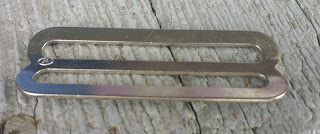Posts from June 25
- Anybody Got a Match, Summer Movie Blogathon… The Parent Trap (1961)
- Blog of the Darned, Summer Movie Blogathon – Dogtown and Z Boys
- City Lights, SMB: In the Good Old Summertime (1949)
- Movie Rob:
- Movies Silently, Fatty and Mabel at the San Diego Exposition (1915) A Silent Film Review
- Phyllis Loves Classic Movies, Ride the Wild Surf (1964)
Posts from June 24
- Blog of the Darned, Summer Movie Blogathon – Pajama Party
- Demanded Critical Reviews:
- The Midnite Drive-In, Don't Be Afraid of No Ghosts
- Movie Rob, Summer Movie Blogathon – The Sandlot (1993)
- Realweegiemidget Reviews, (500) Days of Summer (2009)
- Silents and Talkies, Summer Movie Blogathon: La Piscine (1969)
- The Stop Button, Indian Summer (1993, Mike Binder)
- Thoughts All Sorts, Summer Splashes ... The Way Way Back
Posts before June 24
- Cinematic Scribblings, Family Affair: The End of Summer (1961)
- Double Exposures, Bouquets of Faces: Christmas in July (1940, Dir. Preston Sturges)
- Film Perspective, Summer Movie Blogathon: Raiders of the Lost Ark
- Soul Ride, Summer Movie Blogathon: “Muscle Beach Party”
#####
We've been a little generous with our definition of Summer as indicated below. The only rule is no repeats on movies titles, first come first served. If interested, post a comment saying what movie you want to do below. Examples of qualifying films include the following.
Movies with Summer in the title:
Examples:
Movies about the beach, surfing, or summer sports:
Examples:
Movies about summer or hot weather:
Examples:
Movies about vacation/camping or set in amusement park/resort area:
Examples:
Summer blockbusters (to qualify, must have been released between April and September):
Examples:
Here's what we have so far:
500 Hundred Days of Summer[Taken]- The Endless Summer
- Suddenly Last Summer
- Long Hot Summer
In the Good Old Summertime[Taken]Indian Summer[Taken]Summer of '42[Taken]- Summer of Sam
- Corvette Summer, they can't all be Casablanca, folks
Movies about the beach, surfing, or summer sports:
Examples:
- Beach Party,
Muscle Beach Party, [Muscle Beach Party is Taken] ... - Gidget
- Ride the Wild Surf
Dog Town and Z Boys[Taken, unless someone else wants it real bad]- Deliverance
- Without a Paddle
- Major League
- Bull Durham
Movies about summer or hot weather:
Examples:
- Stand by Me
- Grease
- Dazed and Confused
American Graffiti[Taken]- Seven Year Itch
- Weekend at Bernie's
Movies about vacation/camping or set in amusement park/resort area:
Examples:
- Coney Island
- Roman Holiday
[Taken]Change of plans, Roman Holiday now open - National Lampoon's Vacation
- Meatballs
- Tucker and Dale vs. Evil
- Mr. Hobbs Takes a Vacation
- Euro-Trip
- Woman on the Run
Summer blockbusters (to qualify, must have been released between April and September):
Examples:
- Jaws
- Men in Black
Independence Day[Taken]Raiders of the Lost Ark[Taken]Ghostbusters[Ghostbusters and Ghostbusters II are Taken]
Here's what we have so far:
- 500 Days of Summer (2009), Realweegiemidget Reviews
- A Brighter Summer Day (1991), Charlene's (Mostly) Classic Movie Reviews
- Christmas in July (1940), Double Exposures
- Clash by Night, In the Good Old Days of Classic Hollywood
- ,The End of Summer (1961), Cinematic Scribblings
- E.T. the Extra-Terrestrial (1982) and American Graffiti (1973) demandedcriticalreviews
- Fatty and Mabel at the San Diego Exposition (1915), Movies Silently
- Ghostbusters (1984) and Ghostbusters II (1989), The Midnite Drive-in
- In the Good Old Summertime (1949), City Lights
- In the Heat of the Night (1967), Iron Clad Words
- Indian Summer (1993), The Stop Button
- Independence Day (1996), Listening to Film
- La Piscine (1969), Silents and Talkies
- Muscle Beach Party (1964), Soulride
- Pajama Party (1964) and if I get ambitious, I might do Dogtown and Z Boys (2001) as well (unless someone else wants it), Blog of the Darned
- The Parent Trap (1961), Anybody Got a Match
- Raiders of the Lost Ark, Film Perspective
Roman Holiday, In the Good Old Days of Classic Hollywood- Summer of '42, The Sandlot, and Little Darlings, Movierob
- The Way Way Back (2013) Thoughts All Sorts















































